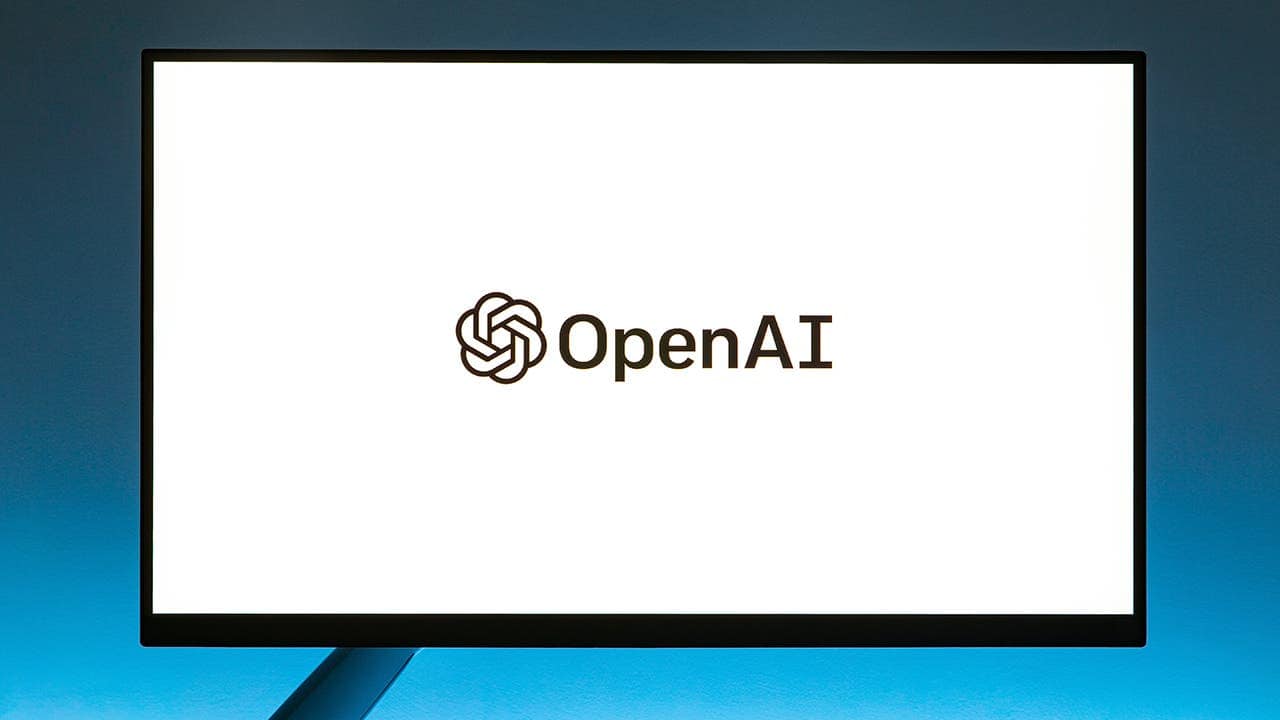OpenAI, a leading research laboratory for artificial intelligence, has unveiled Voice Engine, a revolutionary text-to-speech (TTS) platform that leverages a mere 15-second audio sample to generate a synthetic replica of a human voice. This innovative technology follows the successful debut of Sora, OpenAI’s text-to-video AI model, earlier in 2024. Further solidifying their commitment to pushing the boundaries of creative AI applications.
The Power of a Sample: OpenAI’s Voice Engine and the Future of Text-to-Speech

Capabilities and Applications
Voice Engine empowers users to generate synthetic voices capable of reading text prompts in various languages, including the speaker’s native tongue. This opens doors across diverse industries, with potential applications ranging from educational tools to content creation and communication accessibility.
However, OpenAI acknowledges the potential for misuse inherent in such powerful technology. While actively exploring its constructive applications, they emphasize a commitment to responsible deployment strategies.
Development and Early Implementations
Voice Engine’s development began in late 2022 and has since been integrated into OpenAI’s existing TTS infrastructure, including the ChatGPT Voice and Read Aloud features. Through partnerships and small-scale deployments, the company has gleaned valuable insights into the platform’s real-world applications.
Also, here are some of the promising early use cases across various sectors:
- Reading Assistance: Age of Learning utilizes Voice Engine to personalize learning experiences for children and non-readers. The technology generates natural-sounding, emotive voices for pre-scripted voice-over content, facilitating comprehension and engagement. Additionally, it allows for real-time interaction, further enhancing the learning process.
- Content Translation: HeyGen leverages Voice Engine to empower creators and businesses to reach global audiences. By seamlessly integrating Voice Engine into their video translation pipeline, content can be translated and narrated in multiple languages while preserving the original speaker’s accent and voice characteristics. This fosters a more authentic and engaging experience for viewers across diverse regions.
- Community Health Services: Dimagi employs Voice Engine to overcome language barriers in remote areas. Interactive feedback provided to community health workers can now be delivered in their native languages. Including Swahili and Sheng, leading to improved service delivery and patient care.
- Augmentative Communication: Livox, a developer of AAC devices for individuals with disabilities, utilizes Voice Engine to provide users with unique and natural-sounding synthetic voices in multiple languages. This empowers them with greater control over their communication and self-expression.
- Voice Recovery: The Norman Prince Neurosciences Institute at Lifespan is exploring the potential of Voice Engine in restoring speech capabilities for individuals suffering from medical conditions affecting speech production, such as brain tumors. This research holds significant promise for improving the quality of life for individuals with speech impairments.
Ensuring Responsible Deployment
So, OpenAI recognizes the potential risks associated with synthetic voice technology. Mitigating these risks forms a cornerstone of their development and deployment strategy.
Partners granted access to Voice Engine during the preview stage are required to adhere to strict usage policies. This includes obtaining explicit consent from the voice owner for sample use and ensuring transparency with users regarding the AI-generated nature of the audio content.
Furthermore, OpenAI implements safeguards such as digital watermarks to track the origin of synthetic audio and actively monitors its use to deter misuse. These efforts underscore their commitment to responsible AI development and deployment.
Future Considerations and Societal Impact
OpenAI envisions Voice Engine as a catalyst for exploring the technical frontiers of AI while prioritizing safety and ethical considerations. Although currently in a preview stage, the technology paves the way for transformative applications across various fields. However, it also necessitates open discussions regarding societal preparedness for such advancements.
Additionally, to mitigate potential risks associated with increasingly sophisticated generative models, OpenAI proposes several key areas for exploration:
- Phasing Out Voice-Based Authentication: Due to the ease of replicating voices with Voice Engine and similar technologies, voice-based authentication methods may no longer be reliable. Research into alternative authentication methods is crucial to maintain security in a world with synthetic voices.
- Safeguarding Individuals’ Voices in AI Systems: Mechanisms for individuals to retain control over how their voice data is used within AI systems need to be established. This includes clear opt-in and opt-out options for voice sample use.
- Public Education on AI Capabilities and Limitations: Public awareness campaigns can promote understanding of AI capabilities and limitations. This fosters responsible use of both AI-generated content and the technology itself.
- Advancing Techniques for Verifying Audiovisual Content Authenticity: Developing robust methods for verifying the authenticity of audiovisual content is essential. This will help combat the spread of misinformation and disinformation that could potentially be created using synthetic voices.
Availability
Despite its groundbreaking capabilities, Voice Engine remains in a preview stage, not yet available for public use. OpenAI prioritizes responsible deployment and acknowledges the potential for misuse as the primary reason for this cautious approach. This underscores their commitment to fostering trust and ensuring the technology serves positive purposes.

The Ethical Landscape: Balancing Innovation and Human Values
The emergence of Voice Engine raises a multitude of ethical considerations that demand careful attention. Here’s a deeper exploration of some key concerns:
- Weaponization of Misinformation: Synthetic voices can be used to create highly realistic deepfakes. Potentially leading to the spread of misinformation and manipulation of public opinion. This could have significant ramifications for elections, political discourse, and social harmony.
- Erosion of Trust: The widespread use of synthetic voices could erode trust in traditional forms of communication. Making it challenging to discern genuine voices from AI-generated ones. This could have a chilling effect on free speech and open dialogue.
- Privacy Concerns: The ability to recreate voices with minimal data raises privacy concerns. Regulations regarding voice data collection, storage, and usage need to be established to prevent unauthorized use or exploitation.
- Accessibility and Equity: While Voice Engine holds promise for accessibility applications. Ensuring equitable access to the technology is crucial. Price points, technical expertise requirements, and potential biases within the AI model itself need to be addressed to prevent further marginalization.
Addressing the Ethical Landscape: A Collaborative Approach
So, mitigating the potential risks associated with Voice Engine requires a collaborative approach involving various stakeholders:
- Tech Developers: Developers like OpenAI have a responsibility to prioritize ethical considerations throughout the development process. Implementing safeguards, fostering transparency, and collaborating with ethicists are crucial steps.
- Policymakers: Governments need to develop robust legal frameworks to regulate the development, use, and distribution of synthetic voice technology. This includes addressing data privacy concerns and potential misuse for malicious purposes.
- Media Literacy Education: Educational initiatives promoting critical thinking and digital literacy skills are essential to empower individuals to discern the authenticity of information encountered online, including AI-generated content.
- Public Discourse: Open and transparent dialogue about the potential risks and benefits of synthetic voice technology can pave the way for responsible development and deployment strategies.
Beyond Accessibility: The Artistic Potential of Voice Engine
While the focus on accessibility applications for Voice Engine is commendable, its potential extends far beyond replicating existing voices for educational or communication purposes. Here’s a glimpse into the artistic possibilities that this technology unlocks:
- Synthetic Narration for Audiobooks and Storytelling: Authors and storytellers can leverage Voice Engine to create immersive audiobook experiences with a diverse range of believable and expressive voices. This opens doors for personalized reading experiences, tailored to individual preferences or catering to specific demographics.
- Reimagining Fictional Characters: Voice Engine empowers game developers and filmmakers to create characters with unique and compelling synthetic voices, further blurring the lines between reality and fiction. Imagine a future where video game characters speak in a multitude of languages, each with natural-sounding accents and regional dialects, enhancing the player’s immersion within the game world.
- Preserving Endangered Languages: Voice Engine could be used to create synthetic voices for endangered languages, ensuring their survival and cultural transmission to future generations. This technology can be used to revitalize dying languages by creating educational resources or even generating synthetic recordings of traditional stories and songs.
- Musical Composition and Performance: Musicians can explore new sonic landscapes by utilizing synthetic voices alongside traditional instruments. Imagine choirs composed of AI-generated voices, harmonizing in perfect unison or morphing seamlessly between different vocal styles.
The Future of Human-AI Collaboration
The potential of Voice Engine lies not just in replicating voices but in fostering creative collaboration between humans and AI. Here are some possibilities:
- Voice Acting and Performance Enhancement: Voice actors could utilize Voice Engine to enhance their performances or even create backup voices for physically demanding roles. This technology could also open doors for actors with disabilities to participate in voice acting roles that were previously inaccessible.
- Personalized Voice Assistants: Personalized voice assistants can be further enhanced by incorporating Voice Engine. Imagine a future where virtual assistants learn and adapt to a user’s preferred voice characteristics, leading to a more natural and engaging user experience.
- Interactive Storytelling Platforms: Interactive storytelling platforms can leverage Voice Engine to create immersive experiences where users interact with AI-powered characters voiced in a natural and engaging manner. This could lead to new forms of interactive fiction and entertainment.
Challenges and Considerations
While the artistic potential of Voice Engine is vast, several challenges need to be addressed:
- Maintaining Artistic Control: Artists need to retain control over the creative process while utilizing Voice Engine. Finding the right balance between AI-generated voices and artistic vision will be crucial.
- Authenticity and Emotional Nuance: Synthetic voices need to capture not just the sound of a human voice. But also the emotional nuances that convey meaning and impact.
Conclusion: A Powerful Tool for Good
Voice Engine represents a powerful tool with the potential to revolutionize the world of art and storytelling. By fostering human-AI collaboration and addressing the challenges associated with artistic control and emotional expression, Voice Engine can become a catalyst for a new era of creative expression. As we navigate this future, ensuring human values remain at the forefront will be crucial in harnessing the power of AI for artistic exploration and cultural enrichment.
So, OpenAI’s Voice Engine represents a significant leap forward in text-to-speech technology. Offering a multitude of potential applications that can benefit society. However, the potential for misuse demands a cautious and responsible approach. By prioritizing ethical considerations, fostering collaboration between stakeholders, and implementing appropriate safeguards, Voice Engine can be harnessed as a powerful tool for positive change. While challenges remain, Voice Engine signifies a future where communication transcends language barriers and empowers individuals with new forms of expression. As we navigate this brave new world, prioritizing human values alongside innovation will be paramount in ensuring a future where synthetic voice technology serves the greater good.





